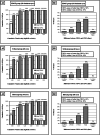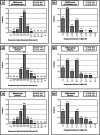Neurosensory binocular vision after bilateral implantation of an extended depth of focus intraocular lens with micro-monovision: a prospective cohort study
- PMID: 40389895
- PMCID: PMC12087097
- DOI: 10.1186/s12886-025-04125-5
Neurosensory binocular vision after bilateral implantation of an extended depth of focus intraocular lens with micro-monovision: a prospective cohort study
Abstract
Background: The goal of this study was to evaluate the presbyopia-correcting performance, binocular visual quality and neurosensory binocular vision of bilateral implantation of an extended depth of focus (EDOF) intraocular lens (IOL) with micro-monovision and compare this IOL with two multifocal IOLs.
Methods: This prospective cohort study enrolled patients with bilateral implantation of diffractive EDOF IOL (Tecnis Symfony ZXR00, Abbott Medical Optics, Inc.), diffractive trifocal IOL (AT LISA tri 839MP, Carl Zeiss Meditec AG) and refractive rotationally asymmetric bifocal IOL (SBL-3, Lenstec, Inc.). Monocular outcomes including visual acuity and refraction status, binocular outcomes including visual acuity at different distances, defocus curve and contrast sensitivity, neurosensory binocular vision outcomes including simultaneous perception, fusion and stereoscopic vision, and questionnaire results including spectacle independence, photic phenomena and satisfaction were assessed three months after surgery. One-way ANOVA and Kruskal-Wallis H test were used to compare the mean of three groups. Chi-square test and Fisher exact test were used to compare the proportions.
Results: The efficacy, safety and accuracy of the EDOF group reached a similar level to the trifocal group. The bilateral EDOF IOL with micro-monovision performed better in intermediate visual acuity (versus the bifocal group, P = 0.031) and far stereoscopic vision (versus the other two groups, P < 0.05), but there were disadvantages in binocular visual acuity with the -3.0 ~ -4.0D addition (versus the other two groups, P < 0.05), binocular contrast sensitivity (versus the other two groups, P < 0.05), near spectacle independence (versus the trifocal group, P = 0.030) and photic phenomena (versus the bifocal group, P < 0.05). No significant difference was found in simultaneous perception, fusion and satisfaction at different distances (all P > 0.05).
Conclusion: Bilateral EDOF IOL implantation with micro-monovision successfully treated cataract, provided reliable binocular far and intermediate visual acuity, good neurosensory binocular vision and patient satisfaction. It achieved better far stereoscopic vision than multifocal IOLs, but lagged behind in near visual acuity, near spectacle independence and binocular contrast sensitivity.
Trial registration: This study was retrospectively registered and posted on clinicaltrials.gov at 12/02/2020 (NCT04265846).
Keywords: Binocular vision; Cataract; Extended depth of focus; Intraocular lens; Multifocal.
© 2025. The Author(s).
Conflict of interest statement
Declarations. Ethics approval and consent to participate: This study adhered to the Declaration of Helsinki for the use of human participants in biomedical research and received the approval of the ethics committee of Peking University Third Hospital. Informed consent was obtained from all participants included in the study. Written informed consent was obtained from all subjects. Consent for publication: Not applicable. Competing interests: The authors declare no competing interests.
Figures




Similar articles
-
A Comparative Evaluation of a New Generation of Diffractive Trifocal and Extended Depth of Focus Intraocular Lenses.J Refract Surg. 2018 Aug 1;34(8):507-514. doi: 10.3928/1081597X-20180530-02. J Refract Surg. 2018. PMID: 30089179 Clinical Trial.
-
Defocus curves of 4 presbyopia-correcting IOL designs: Diffractive panfocal, diffractive trifocal, segmental refractive, and extended-depth-of-focus.J Cataract Refract Surg. 2019 Nov;45(11):1625-1636. doi: 10.1016/j.jcrs.2019.07.014. J Cataract Refract Surg. 2019. PMID: 31706517
-
Comparison Between Bilateral Implantation of a Trifocal IOL and Mix-and-Match Implantation of a Bifocal IOL and an Extended Depth of Focus IOL.J Refract Surg. 2020 Aug 1;36(8):528-535. doi: 10.3928/1081597X-20200616-01. J Refract Surg. 2020. PMID: 32785726
-
Trifocal intraocular lenses versus bifocal intraocular lenses after cataract extraction among participants with presbyopia.Cochrane Database Syst Rev. 2020 Jun 18;6(6):CD012648. doi: 10.1002/14651858.CD012648.pub2. Cochrane Database Syst Rev. 2020. Update in: Cochrane Database Syst Rev. 2023 Jan 27;1:CD012648. doi: 10.1002/14651858.CD012648.pub3. PMID: 32584432 Free PMC article. Updated.
-
Comparative efficacy and safety of all kinds of intraocular lenses in presbyopia-correcting cataract surgery: a systematic review and meta-analysis.BMC Ophthalmol. 2024 Apr 16;24(1):172. doi: 10.1186/s12886-024-03446-1. BMC Ophthalmol. 2024. PMID: 38627651 Free PMC article.
References
-
- Wolffsohn JS, Davies LN. Presbyopia: Effectiveness of correction strategies. Prog Retin Eye Res. 2019;68:124–43. - PubMed
-
- Alio JL, Plaza-Puche AB, Fernandez-Buenaga R, Pikkel J, Maldonado M. Multifocal intraocular lenses: An overview. Surv Ophthalmol. 2017;62(5):611–34. - PubMed
-
- Negishi K, Hayashi K, Kamiya K, Sato M, Bissen-Miyajima H, Survey Working Group of the Japanese Society of C, et al. Nationwide Prospective Cohort Study on Cataract Surgery With Multifocal Intraocular Lens Implantation in Japan. Am J Ophthalmol. 2019;208:133-144. - PubMed
-
- Rampat R, Gatinel D. Multifocal and Extended Depth-of-Focus Intraocular Lenses in 2020. Ophthalmology. 2020. - PubMed
-
- Cochener B, Concerto Study G. Clinical outcomes of a new extended range of vision intraocular lens: International Multicenter Concerto Study. J Cataract Refract Surg. 2016;42(9):1268–75. - PubMed
Publication types
MeSH terms
Associated data
Grants and funding
LinkOut - more resources
Full Text Sources
Medical

